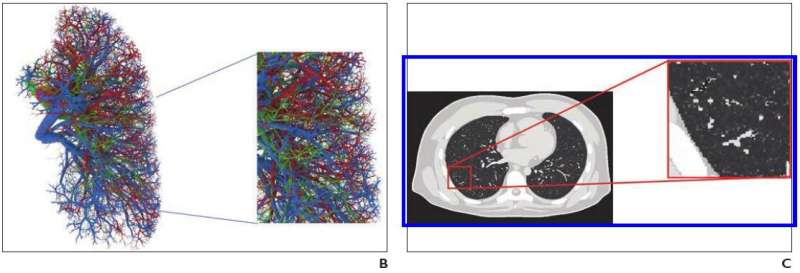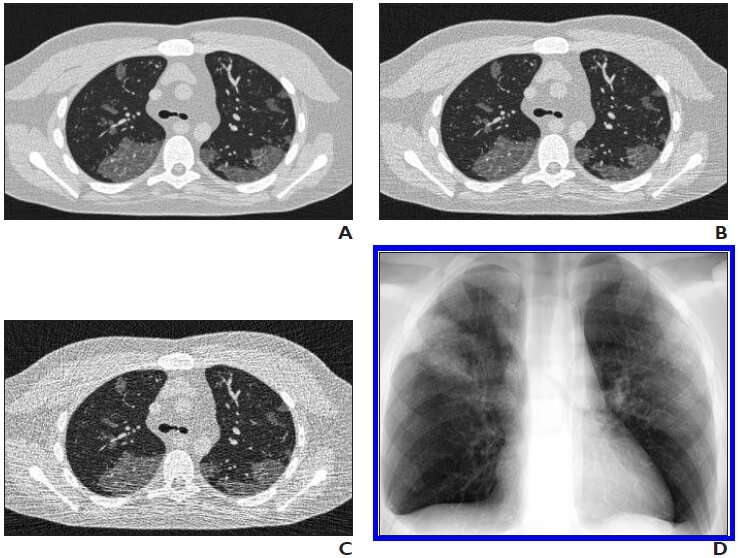B, Representative computational model shows lung stroma intraorgan structure of XCAT phantom that was developed using anatomically informed mathematic model. Inset shows enlarged view for better visibility of details and small structures. C, Voxelized rendition (ground truth) of XCAT phantom highlights detailed model of lung parenchyma. Inset shows enlarged view for better visibility of details and small structures. Credit: American Roentgen Ray Society (ARRS), American Journal of Roentgenology (AJR)
An open-access article in ARRS' American Journal of Roentgenology (AJR) established a foundation for the use of virtual imaging trials in effective assessment and optimization of CT and radiography acquisitions and analysis tools to help manage the coronavirus disease (COVID-19) pandemic.
Virtual imaging trials have two main components—representative models of targeted subjects and realistic models of imaging scanners—and the authors of this AJR article developed the first computational models of patients with COVID-19, while showing, as proof of principle, how they can be combined with imaging simulators for COVID-19 imaging studies.
"For the body habitus of the models," lead author Ehsan Abadi explained, "we used the 4-D extended cardiac-torso (XCAT) model that was developed at Duke University."
Abadi and his Duke colleagues then segmented the morphologic features of COVID-19 abnormalities from 20 CT images of patients with multidiagnostic confirmation of SARS-CoV-2 infection and incorporated them into XCAT models.
"Within a given disease area, the texture and material of the lung parenchyma in the XCAT were modified to match the properties observed in the clinical images," Abadi et al. continued.
Using a specific CT scanner (Definition Flash, Siemens Healthineers) and validated radiography simulator (DukeSim) to help illustrate utility, the team virtually imaged three developed COVID-19 computational phantoms.
"Subjectively," the authors concluded, "the simulated abnormalities were realistic in terms of shape and texture," adding their preliminary results showed that the contrast-to-noise ratios in the abnormal regions were 1.6, 3.0, and 3.6 for 5-, 25-, and 50-mAs images, respectively.
Images of same phantom show simulated CT at 50 (A), 25 (B), and 5 (C) mAs, as well as simulated chest radiograph (D). Credit: American Roentgen Ray Society (ARRS), American Journal of Roentgenology (AJR)
More information: Ehsan Abadi et al, Virtual Imaging Trials for Coronavirus Disease (COVID-19), American Journal of Roentgenology (2020). DOI: 10.2214/AJR.20.23429
Journal information: American Journal of Roentgenology
Provided by American Roentgen Ray Society

























